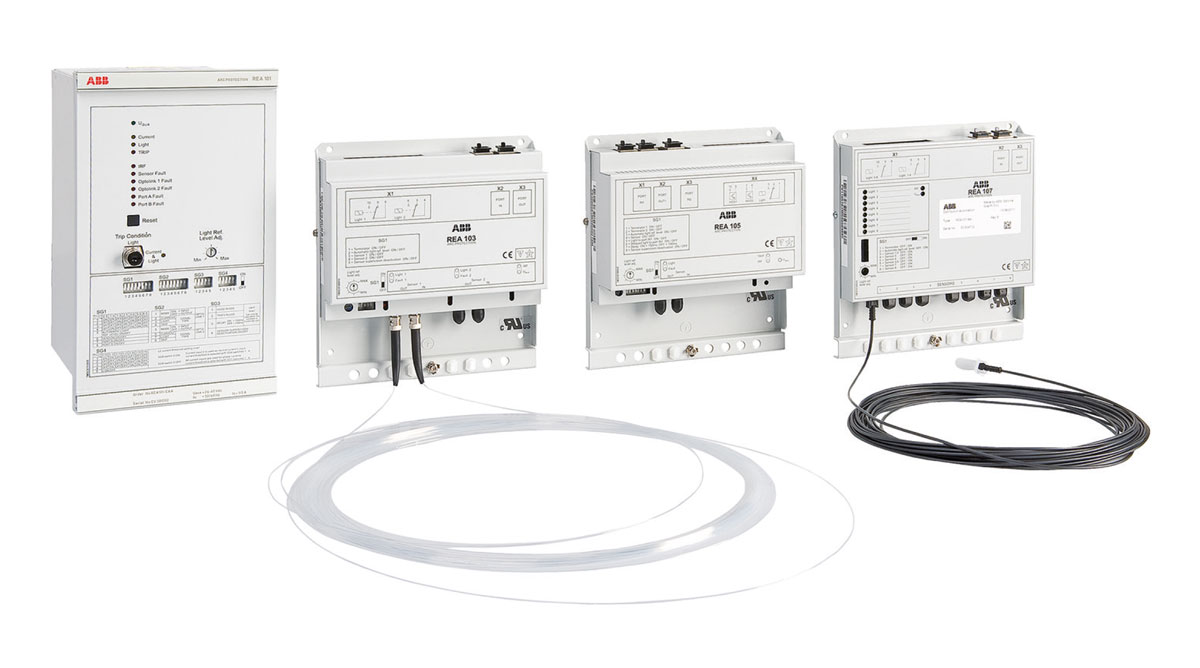EXECUTIVE SUMMARY
Is Your Electrical Distribution System Smarter Than You?
- The electrical industry is moving away from centralized systems toward distributed distribution.
- Integrating smart technology into electrical distribution facilities yields significant benefits.
- Smart technology contains built-in knowledge gathering to support ROI business cases.
- ABB’s smart technology reduces cost and improves the efficiency and safety of electrical distribution.
Traditional electrical distribution systems often rely on manual, on-site operation and local response in the event of abnormal conditions. As systems have advanced to include remote operation capabilities and safety improvements, these ever-evolving “smart” technologies have been integrated into distribution equipment such as lighting panels, power panels, motor control centers (MCCs), breakers, switches, and switchgear.
ABB designed and developed the SACE® Emax 2 and Tmax® XT low voltage power and molded case smart breakers to enable smart facility design and implementation. The circuit breaker lines are part of the ABB ReliaGear™ Smart Power Distribution platform for improved safety, efficiency, maintainability, reliability, and sustainability of distribution systems.
Speakers
Context
The electrical industry is moving away from centralized systems toward distributed distribution.
While energy sources and the reach of electricity distribution have evolved over the years, major components of the distribution system have not experienced much radical design change. Traditionally, power transmission and distribution systems consist of large generation plants that use some form of fuel, coal, gas, nuclear, or hydro to generate electricity.
In a traditional system, a centralized point of generation is repeatedly split into multiple circuits as the electricity moves closer to end users. These systems are mostly passive, with limited means of communication between devices and little internal regulation, and are frequently labeled “dumb” — a disadvantage in an ever-advancing industry.
Although the traditional system is the primary standard of electrical generation and distribution worldwide, distributed generation (or distributed distribution) leverages renewable resources, is smaller in scale, and is located on-site with the end user. These increasingly popular “micro grids” or “nano grids” are less dependent on a utility provider and minimize carbon footprint.
Distributed distribution facilities can be isolated and standalone or work in tandem with the utility grid. Most are connected to the grid to ensure reliable access to electricity, while some are integrated with other local systems to make a group of interconnected micro grids more reliable. Solar power is the most common source of distributed generation.
Integrating smart technology into electrical distribution facilities yields significant benefits.
All systems need to become “smarter” to maintain high levels of reliability, sustainability, and safety.
Smart devices allow access to monitoring and control operations from anywhere, anytime.
Smartphone technology, combined with the industrial Internet of Things (IoT), is fomenting evolutionary leaps in electrical distribution system capabilities. Applying smart industrial IoT technology to distribution equipment enables data to be precisely collected, displayed, and analyzed, allowing facility managers to make proactive decisions or program automated actions based on system variables.
In large facilities, remote capabilities enabled by smart devices provide operational efficiencies and personnel safety benefits. In a traditional system, an operator has to be physically present at each device to operate or connect to it to monitor its status and health. In a smart facility equipped with sensors, smart relays, and other smart devices connected to the IoT or the cloud, the system and associated data can be accessed and controlled remotely.
Smart facilities are designed to integrate the electrical distribution system into the smart system to enable seemingly endless configurations that reduce cost, improve safety, minimize carbon footprint, and more.
Remote access and control
Self-healing facilities
Using logic
Automating actions
Taking advantage of connectivity
Next-generation breakers and switch gear offer Bluetooth connectivity, which allows electrical workers to stay outside of the arc flash boundary of electrical equipment while connecting to it with a smartphone to safely monitor real-time status, set parameters, and check measurements.

Smart technology contains built-in knowledge gathering to support ROI business cases.
- Tracking efficiencies and energy use
- Streamlining operations and improving safety
- Enabling possibilities and flexibility
ABB’s smart technology reduces cost and improves the efficiency and safety of electrical distribution.
ABB’s smart breakers reduce the need for complex PLC programming by adding the ability to embed logic and perform custom logic by combining information obtained from the circuit breaker with programmable inputs and outputs. This ensures continuous power and system operation.
The ABB Ekip Touch Trip Units are the brains of the circuit breakers, utilizing an industrial-grade touchscreen HMI for easy navigation. They are offered in different versions to meet the needs of various applications. The platform is designed to evolve over its life cycle, facilitating upgrades through downloadable digital packages without replacing trip units or purchasing additional hardware.
ABB breakers are easy to integrate into automation and energy management systems by providing high-accuracy measurements and three levels of connectivity to share critical data from ABB breakers to the facility system, including:
Bluetooth local connection
Native communication protocols
Cloud connectivity
ABB Ability™ Energy and Asset manager is a cloud-based platform for monitoring and managing facilities’ electrical distribution systems from anywhere and provides key data to analyze and optimize energy usage.
ABB’s embedded ATS solution simplifies the design of a traditional ATS system from approximately 34 cables to only three cables, reducing engineering time and points of failure that come with complex ATS schemes, without compromising service continuity for critical power applications.
Additional Resources


Tommy Northcott explained electrical distribution trends and how smart technology in distribution facilities can lower cost, increase efficiency, and improve safety. Mike Dutoit shared information about ABB’s smart breakers and how the “All-in-One” design supports smart facilities.

Discover how the new line of ReliaGear smart power distribution products utilizes smart design and smart technology to simplify every level of protection for your project.






